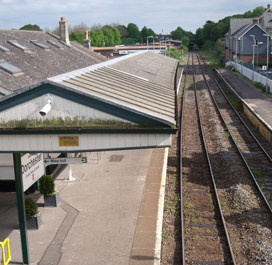The COVID19 pandemic offers an opportunity for re-imagining our transport networks, and especially rail, a webinar heard. Fewer passengers overall and less long-distance business travel will mean a different commercial model for the rail industry with new possibilities including the end of season tickets, all-digital ticketing, a more efficient, intelligent, infrastructure and a switch to freight traffic.
These ideas of the future of the rail sector emerged from the webinar by Resilience First, the not-for-profit business organisation. The speakers included Nick King, Group Director Network Services at Network Rail; Dyan Crowther, CEO at HS1 Ltd; and Tom Meacock, Client Director Strategic Rail at the engineering firm Atkins.
The industry figures also spoke of the rail sector as the backbone of the UK economy and the need to protect services and capacity, to support economic recovery, enhance resilience and promote sustainability.
Tom Meacock from Atkins introduced the webinar saying: “The resilience of the network has been tested during this pandemic. Strains have been put on the fundamental models of railways around the world. Having kept the system running during the crisis, we now need to see how we can help the rail sector to recover. We also need to start re-imagining all of our transport systems to ensure our they remain agile, resilient and sustainable for the future.”
Nick King, Group Director, Network Services, Network Rail, agreed, saying: “Resilience is not just on the agenda now it is the agenda. COVID19 creates a novel problem with passenger demand at a record low, but the cost base still the same. With passenger demand at less than 10% of normal, the whole business model of our railways is under challenge. But the railways are a symbol of stability for good reason. There will be changes building on the biggest lessons learnt exercise in our history.
“To keep our railways safe and open we are increasingly having to rely on AI and robotics. The use of AI in rail is growing and we are making real progress in delivering a data driven railway. Intelligent infrastructure is how we are joining up the different data points. We have now recorded over 12,000 km of track using two helicopters and 3D imaging equipment.”
“Freight is still delivering quietly in the background, as it always has done, delivering to industry, the NHS and supermarkets and shops. One of the things we have been able to do with fewer passenger trains is to give freight significantly greater access to the railway with longer, faster trains. This may prove to be one of the ways forward in the future.”
Dyan Crowther also looked into the future. He said: “Rail is the backbone of the UK economy. Demand should and will come back. We should not forget that prior to COVID19 some parts of the system were under incredible pressure. We must not hit the pause button on planned investments. We need to continue to look forward with our investment plans. We need to get our heads out of this crisis and start looking forward.”
“We need to protect services and capacity to deliver a sustainable transport network for the future. International high speed rail is a green alternative to air travel. London to Paris by rail generates 4kg of CO2 per person, compared to 63kg of CO2 for the same air journey. The rail sector is a proven driver of economic growth, but it needs flexibility and support from the government to get through this period.”
“Both the commuter and the business traveller model are going to change quite considerably. Domestically, the season ticket may now dead with less frequent, more agile rail travel. This is also a great opportunity to move over to digital ticketing 100%. Internationally, the model for rail may have to change from business travel to low-cost recreational travel to compete with low-cost airlines.”
Robert Hall, Executive Director of Resilience First, closed the webinar by saying: “The COVID19 pandemic has created unprecedented challenges for the rail sector, as for many other industries, and is raising serious long-term questions about the viability of the current commercial model for rail companies. But the rail network is indeed the backbone of the UK economy and it is vital for national economic resilience that the network capacity is not lost.”
“This means that significant government assistance will be needed to support rail companies. In return, the government should demand that the rail industry seize upon the opportunity to introduce not only safe travel for passengers, but also make maximum use of efficiencies such as 100% digital ticketing and AI to deliver a modern, efficient and resilient rail network.”
Visit https://www.resiliencefirst.org/.









